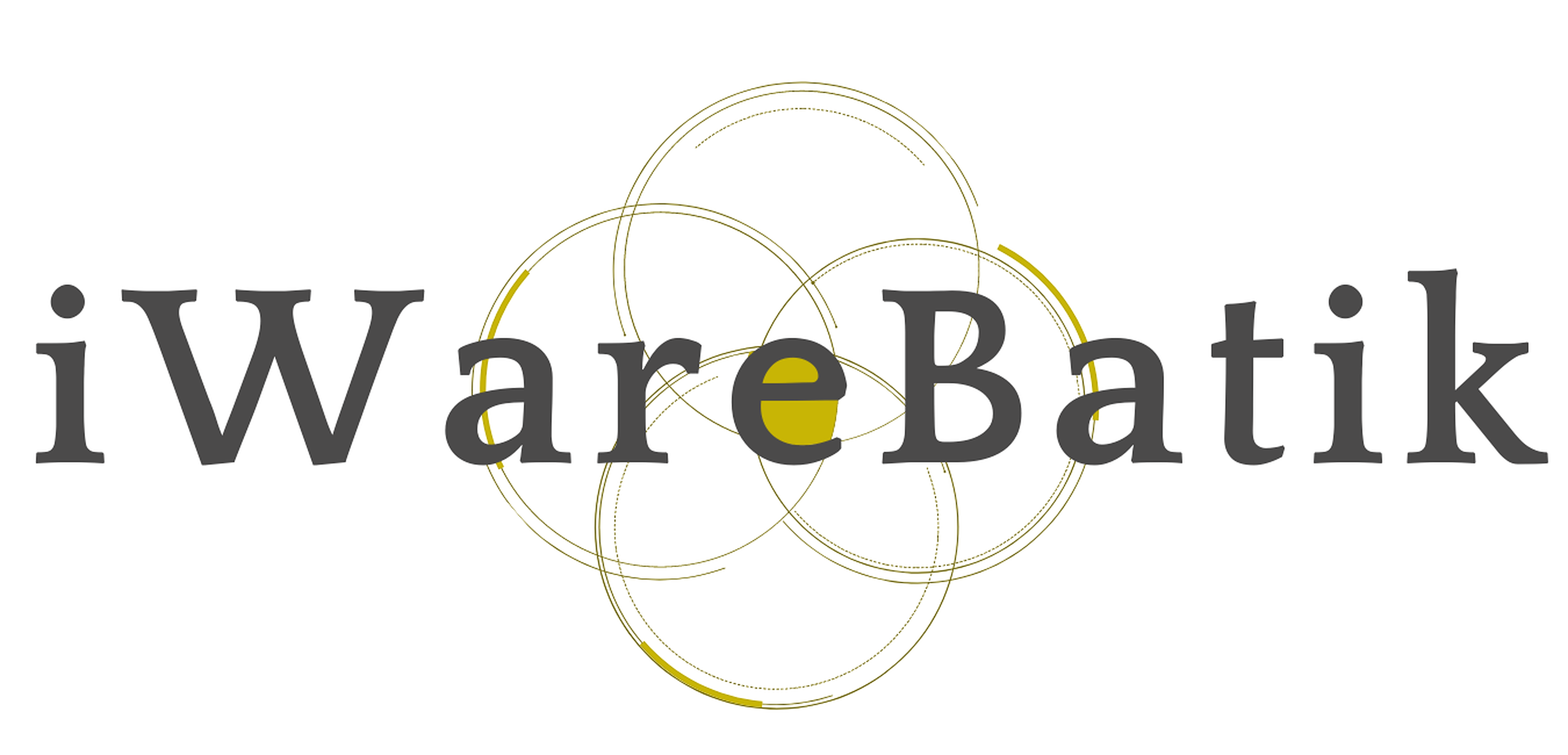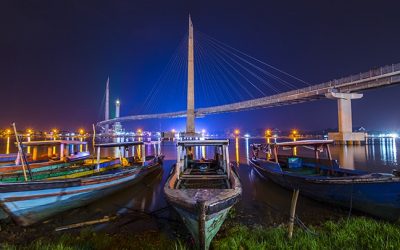Home / Batik Regions – Western Indonesia – Southern Sumatra – Jambi / Muara Jambi Temple
Cultural Destination
Embrace the spirit of the place!
Muara Jambi Temple
Muaro Jambi Temple, built since the 13th Century, is one of Indonesia’s national cultural heritage sites. The complex of Muaro Jambi temple is one of the largest temple complexes in Indonesia, which was constituted as a legacy during the reign of Srivijaya and the Malay Kingdoms in Jambi. The Muaro Jambi temple area is a Hindu and Buddhist-style temple complex, which can be reached by 20 minutes’ traverse by car from Jambi city.
Tourist Attractions in Jambi
Batanghari Pedestrian Bridge
Batanghari Pedestrian bridge is also another iconic landmark of Jambi. This bridge was
Gentala Arasy
Built as high as 80 meters, the tower also highlights the historical side of
Jambi
Batik Motifs
Durian Pecah
Broken Durian motifs depict the foundation of faith. The second half signifies the mastery of
Merak Ngeram
The hatching peacock motif has a very deep meaning which refers to the sacrifice and
Angsa Duo
According to legend, the Angso duo batik motif is a pair of swans that are believed to have led Princess
Discover
Indonesian
Batik
Motifs
Cengkeh
The clove flower motif is the main commodity of the Tolitoli Regency. This motif represents
Angsa Duo
According to legend, the Angso duo batik motif is a pair of swans that are believed to have led Princess
Tubo Kelapa
Coconut tree is a symbol of a good character and strong mentality. It illustrates the more success a person, the more
Wirasat
Wirasat or divine inspiration is a gift from God. This inspiration is symbolized by
Hiu Taliyasan
Indonesia is also home to the world’s largest fish, the whale shark (Rhincodon typus). Hiu Taliyasan refers to
Kerawang Tegak Aceh
The Vertical Upright (Kerawang Tegak) Motif symbolizes a person who has a strong
Daun Simpor
This motif is inspired by the Simpor plant (Dillenia Suffruticosa) which is a typical
Tongkonan
Toraja’s traditional house is called Tongkonan. Tongkonan is a place for
Kaganga Tanah Rejang
If Batik Besurek combines Arabic calligraphy motifs, then the Kaganga batik takes
Mahkota Siger
Siger is the crown of a noblewoman in ancient time. It is a symbol of femininity, strength, and
Dayak Kamang
Kamang motif is generally found in the Dayak tribe shield because it is believed to
Kasih Tak Sampai
‘Kasih Tak Sampai’ is an idiom in the Indonesian language which refers to
Karawo Mahkuta
Mahkuta refers to Gorontalo’s traditional crown. It represents noble characters of
Kaharingan
The Kaharingan or ‘tree of life’ based on the Dayak tribes’ belief system. This tree symbolizes
Gonggong Siput
Gonggong (Strombus Turturella) is one type of sea snail found around
Prada Papua
The word “Prada” in the Javanese-Indonesian dialect means a batik textile that
Awan Berarak
Awan Berarak is a combination of Dayak motifs and Malay patterns. The word ‘Awan Berarak’ means the
Jumputan Bintang
The word Jumputan means the tie-dye technique, while the word “Bintang” refers to
Tikar Natuna
The Tikar Natuna motif is adapted from the traditional making of pandanus mats in
Pattimura
Pattimura is the name of an Indonesian hero who fought against colonialism in
Bale Lumbu
This motif signifies the welfare of the ancient Sasak society. Bale also symbolizes the
Tanah Liek
The word “Tanah Liek” refers to clay in Minang language. It is also known as
Sandeq
Sandeq Boat is a symbol of the maritime importance of the West Sulawesi region. The greatness of
Daun Lada Hitam
The black pepper motif represents the main commodity of Bangka Belitung
Rumah Mamuju
the Batik motif illustrates the house of Mamuju King with the stairs, located on the left of the wooden stage house
Tabir Tanjung
Tanjung flower is a type of Cherry tree flower, which is commonly found in
Daun Sirih
This motif illustrates betel leaves that are used by Lombok communities as traditional
Insang Ikan
Insang refers to the gills of the fish. This is a typical pattern of Malay ethnic who inhabits
Sido Mulyo
Sidomulyo is one of the classical motifs, which is specifically used for the bride’s costume in
Malinau Cultural Festival
You will witness a unique competition that might not be found other than in
Gumin Tambun
Based on Hindu mythology, this motif symbolizes lucks, abundant wealth, and
Jupri Kembang Teh
Kembang Teh illustrates the tendrils of tea plants that grow in the highlands of
Besurek Rembulan
This batik illustrates praise for God who created the wonderful universe
Paqbarre Allo
The word “Barre” means round and “Allo” means the sunlight. This motif is interpreted as
Tifa Totobuang
The batik motifs illustrate Maluku’s traditional music instrument called
Honai
The Honai is inspired by the traditional house of the Papuan community living in
Keluak Daun Pakis
The word “Keluak” is a Minang language which means twisted or tangled. The Motif of
Sekomandi
Its philosophical meaning is the eternal union which refers to a saying “until death do us part”
Besurek Rafflesia
The term “Basurek” refers to a textile that contains letters or inscriptions
Gonggong Beruntun
This motif illustrates that a person should maintain a positive attitude and
Dayak Taghol
Dayak Taghol has a distinctive style of four curved lines and small dots. This motif represents
Biji Kopi
The coffee seeds motif illustrates the pride of local coffee specialities in
Pinawetengan
The Pinawetengan Batik pattern was taken from a prehistoric inscription in
Tengkawang Ampiek
With its many advantages, the Dayaks use this leaf in ritual ceremonies. This plant is a symbol of
Lipaq Sabe
Lipaq Saqbe contains a simple geometric classical motif with various flower decorations. This textile is
Lontara
The Lontara script itself is a typical ancient script of Bugis and Makassar communities. History records that
Ukir Sentani
The Ukir motif is a batik motif that is inspired by various traditional Sentani wood carvings
Salakanagara
Salakanagara batik motif illustrates the first kingdom in the Betawi land
Ikan tambal
The word “Ikan” refers to fish. The philosophical meaning of Ikan Tambal means is
Bultiya
The word ‘Bultiya’ is an acronym of the three major tribes in North Kalimantan, namely
Gajah Way Kambas
The motif illustrates the Lampung’s natural reserve, the Way Kambas. it also symbolizes
Bekantan Pakis
This motif represents Pakis Haji (Polystichum setiferum), an endemic plant in
Bomba Mawar
This motif means sacred love for family, kingdom, and God; It also illustrates
Ake Patra
Ake is related to the divinity and the composition of the universe. It is a symbol of
Gentala Arasy
Built as high as 80 meters, the tower also highlights the historical side of
Durian Pecah
Broken Durian motifs depict the foundation of faith. The second half signifies the mastery of
Raja Ampat
Raja Ampat motif represents the marine life at Raja Ampat archipelago in
Kain Cual
Cual textile tradition has existed since the 17th century. The word “Cual” refers to
Srimanganti
The name of the Srimanganti motif is derived from Palace’s hallway that connects to
Pati-Pati Pinehiku
It symbolizes the hierarchy in society and the social status of the Mekongga
Pucuk Rebung Riau
Pucuk Rebung symbolizes heart determination in achieving goals, good luck, and
Gorga Simeol-Meol
The Gorga Simeol-meol is a pattern of plant tendrils. it is regarded as a symbol of longevity and
Merak Ngeram
The hatching peacock motif has a very deep meaning which refers to the sacrifice and
Taiganja
Taiganja is a precious gold pendant that shows the social status of the Kaili family. It is
Burung Bidadari
Bidadari birds are endemic birds in Halmahera. This motif represents an
Gamolan
This motif illustrates Gamolan, a bamboo musical instrument of Lampung that is
Tampuk Manggis Sasirangan
The motif illustrates the philosophy of the mangosteen fruit, which is
Tangerang Herang
Tangerang Herang motif is a symbol of Tangerang city. The Tangerang Herang batik motif consists of
Singayaksa
The Singayaksa motif comes from the name of a place where Sultan Hasanuddin used to
Teguh Bersatu
This batik motif shows the strength of the people of Kupang. It also represents a sense of



